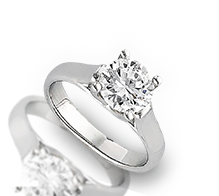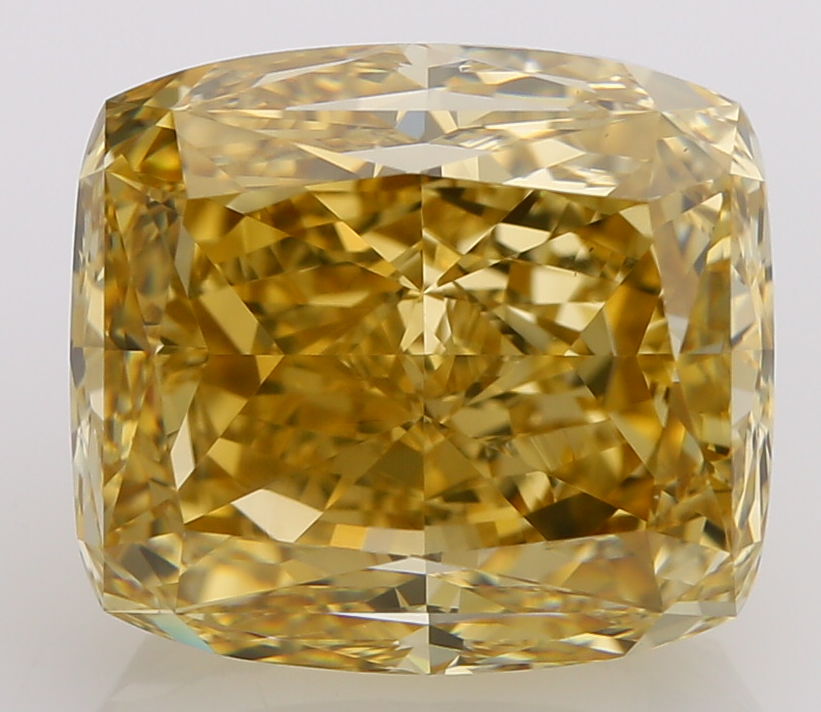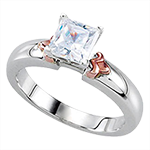The History Of Diamonds
.jpg)
The First Appearance Of Diamonds
It is believed that diamonds have been around for hundreds of millions of years, being formed under very specific conditions such as extremely high temperature and pressure levels and in depths reaching up to 190 kilometers. Diamonds are first believed to have been discovered in India, today one of the largest diamond industries, around 3,000 years ago.
A few hundred years later, in 327 BC, Alexander the Great brought the first diamonds to Europe. It is not until years later that diamonds were used as decorative gems. The name for a diamond comes from the Greek word Adámas, meaning “unbreakable” or “untamed” and they are known to be extremely durable.
Diamonds As Items Of Jewelry
Today, when we look at a diamond we see it in its finest form, after it has been mined, cut and polished. Diamonds were not originally used to adorn jewelry; rather they were treasured in their original, rough state and in some traditions presented to women by their husband as a sign of commitment.
The first recorded instance of diamonds being used to adorn jewelry is when a Hungarian queen wore a crown decorated with rough diamonds. Despite these diamonds being rough stones, they would most likely have been considered beautiful by the public. Diamonds were only available in their rough state, meaning that only well-formed gems were used, leaving poorly formed diamonds, regardless of carat-weight, unused.
In 1375, the Point Cut was developed, the first time that a diamond was cut in a specific form. As the use of diamonds in jewelry increased in popularity, it was discovered that the appearance of a diamond could be improved by polishing a diamond at specific angles to show its brilliance. The Point Cut followed the exact shape of a diamond, creating the opportunity for poorly formed stones to become the beautiful diamonds they were meant to be.
Over time, the Table Cut was introduced, a cut which would reveal more facets to the diamond. As diamond manufacturers increased in knowledge of cutting diamonds, with diamond mining spreading to other parts of the world such as Brazil and South Africa, more sophisticated cuts were produced such as the Rose Cut and the Old Mine Cut. Although these cuts are not commonly manufactured today, they later developed into the most popular cuts we produced today, like the
round cut, Princess cut and oval cut diamonds.
The History Of A Diamond As An Engagement Ring

Believe it or not, giving a woman a diamond engagement ring upon proposing for marriage is a relatively recent phenomenon, first becoming popular in the 1930s. Now, less than a century later, it will be hard to find a bride that hasn’t been given a diamond engagement ring, with 75% of today’s engagement rings having diamonds on them. It is not totally clear how exactly this custom began, although it is believed that the tradition of one presenting his wife with a diamond dates back several centuries.
The presentation of a diamond by a man to the woman he wishes to marry would signify that she has promised to marry him. Around the 1400s, married woman would traditionally have a ring attached to their keys to signify their husband’s ownership over them. In 1477, the first diamond engagement ring was commissioned by Archduke Maximillian of Austria when he married Mary of Burgundy. A ring would also represent one’s status in society, with only a select few permitted to wear rings baring jewels such as diamonds.
One of the reasons that this diamond engagement ring did not set a precedent for future husbands to present to the woman they plan to marry was that diamonds were still rare. Towards the end of the 19th century, the discovery of African diamond mines, owned by the De Beers Company, increased the availability of diamonds. However, demand for diamonds decreased in the 1930s, with the poor economic climate in the U.S. being blamed. Due to the increase in availability of diamonds compared to half a century before, the diamond industry had the capability to grow but people just didn’t have the money to spend on such items.
The Diamond Boom

De Beers increased their marketing efforts and in 1947 the catchphrase “A Diamond is Forever” was launched. This slogan seemed such an appropriate association to a diamond that it is surprising it wasn’t thought of earlier. The phrase painted the perfect picture of what a diamond should represent. Firstly, a diamond is forever because it signifies the eternal bond created between a man and a woman on the day that he asks her to marry him.
Furthermore, as one of the world’s hardest natural substances, diamonds are known to have been passed down generations within families, with a diamond that is well looked after being extremely durable. Similarly, some individuals purchase diamonds as investments, with
Natural Fancy Color Diamonds being among the most popular type of diamond to invest in. Natural Fancy Color Diamonds are becoming increasingly rare and are therefore expected to continue to increase in value. As a small item, these diamonds could prove an ideal investment opportunity for someone looking to invest in an item that is easy to store and carries little or no risk.
De Beers’ marketing campaign and the “A diamond is forever” catchphrase is looked back on as a big contributing factor to the prevailing tradition we now have for a man to present a diamond engagement ring to the woman he wishes to marry. Over the last 70 years, as the demand for diamonds has continued to increase, new cutting techniques have been developed to improve the diamond’s radiance. Today, the most popular diamond cuts include the Round Cut, Princess Cut and Oval Cut diamonds.
The Rise Of The Round Cut Diamond
The Round Cut Diamond is now by far the most popular cut, with 75% of diamonds sold today being round cut diamonds. They started becoming more popular in the year 1919 when renowned diamond cutter Marcel Tolkowsky published a thesis about the reflection and refraction of diamonds. In this work he describes the ideal proportions for a Round Cut Diamond, maximizing the brilliance and light emitting through the diamond.
The Round Cut continues to be the prominent diamond cut today, with Tolkowsky recognized as the father of the
Brilliant Round Cut Diamond. Round Cut Diamonds can consequently cost up to 30% more than a similar diamond in a fancy cut. The Princess Cut Diamond, the most popular fancy cut diamond, was created 60 years later. It also possesses the ability to fit almost any ring and reflects light in a most beautiful way.
Diamonds – Where do They Stand Today?
The world’s diamond industry is currently experiencing a gradual decline in terms of production, as the diamond deposits are becoming scarcer. Of the diamonds that are mined, around 80% of them are not considered to be of a high enough quality to be considered gem quality. These inferior diamonds are used in the industrial sector for grinding, sawing and drilling. Furthermore, on average, for every 1-carat of gem-quality diamond produced, over 250 tons of ore must be mined. This illustrates just how precious each diamond is.
The Good News
The future looks bright for the diamond industry. As diamonds continue to become more difficult to procure, if you already own a diamond, the value will surely only increase, particularly if you own a Natural Fancy Color Diamond. Nonetheless, perhaps due to the increase in demand for diamonds, the diamond production rate currently stands at 133 million carats per year, that’s around a 150% increase from 50 years previously.
If there are any aspects of purchasing diamonds online you are unsure about, our website offers extensive guidance and we can always be contacted on 1-800-557-7095 where one of our expert diamond jewelers will be happy to assist you. Alternatively, you can email us at [email protected] with any questions you may have.




